Father of domestic shipbuilding. Alexey Nikolaevich Krylov
A.N. Krylov
A modern ship is a true masterpiece of technology, a colossal precious ingot of human labor. From the moment the ship is launched, it is threatened with many dangers. History knows countless examples of how the most magnificent ships perished in the repair or in the ordinary trials, not to mention the tragedies during storms and fogs, in battles. The main goal of any ship engineer is to create a ship that can best do its job, reliably protected from all accidents, blows of elements and enemy weapons.
One of the most famous Russian shipbuilders is Alexey Nikolaevich Krylov. This person, first of all, is known for creating the modern theory of the ship and writing the basic works on the structural mechanics of ships. However, the activities of the genius scientist are not limited to this. He made a huge contribution to the development of mathematics, mechanics and compass in Russia. His works on the history of sciences, works on astronomy, and pedagogical views became widespread.
Alexey Nikolaevich 3 was born on August 1863 of the year in the village of Visyaga, Ardatovsky district, Simbirsk province (Ulyanovsk region). Grandfather Krylov participated in all wars with Napoleon, rose to the rank of colonel, for his bravery was awarded the golden weapon. The father of the future Russian and Soviet shipbuilder, Nikolai Aleksandrovich, was a wealthy landowner, an officer who had taken up social activities and agriculture after retirement. Krylov wrote about him: “My father was an artilleryman. He studied at the government expense, because his grandfather was wounded near Borodino, and he got the right to teach all his children for free. ” Mother, Sofia Viktorovna Lyapunova, belonged to an old noble family. A great number of prominent figures of Russian science, in particular the physiologist I.M., were related to Alexey Nikolayevich by his father and mother. Sechenov, linguist B.M. Lyapunov, doctor N.F. Filatov, mathematician A.M. Lyapunov.
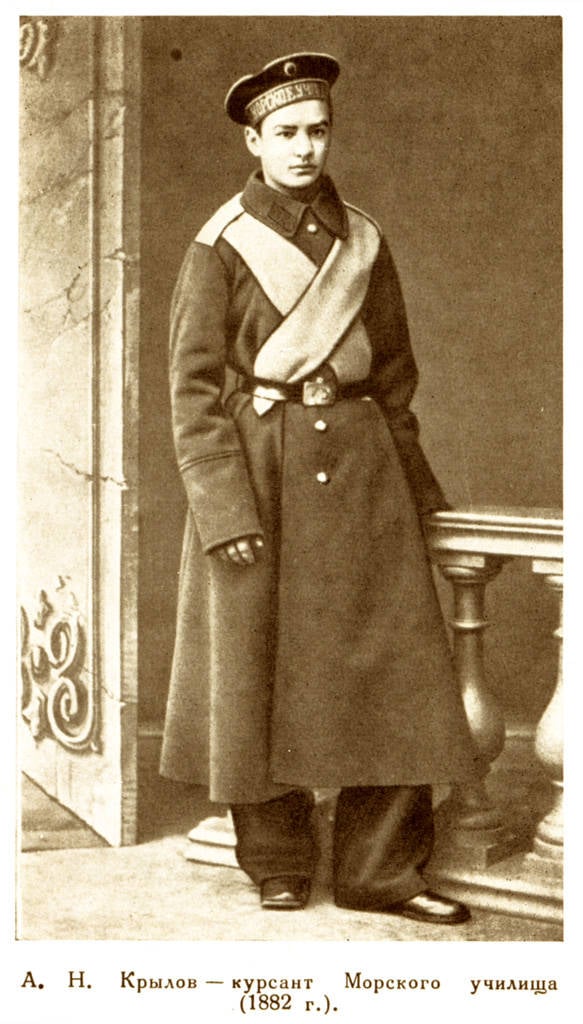
Alexey grew up to be a playful and playful teenager, he loved going out hunting with adults, and often traveled along the Volga steppes to his numerous relatives. When the boy was nine, Nikolai Alexandrovich decided to live in the south of France due to health problems. The whole Krylov family for two years (from 1872 to 1874) settled in Marseille. In a private hostel, the boy learned French and first became acquainted with arithmetic.
Returning to Russia, Alexey's father took up commercial activities. In connection with this, Krylov often had to relocate. During his stay in Sevastopol, the boy made contact with the sailors - heroes of the defense of the city in the Russian-Turkish war. Influenced by their stories about the glorious exploits of our 13 soldiers on September 1878, the young Krylov entered the St. Petersburg Naval School. In those years, the traditions of the previous director, Rimsky-Korsakov, accounted for by his brother, a famous Russian composer, were still maintained in this educational institution. This man was unusually educated, was a wonderful sailor, ardently loved his business and his homeland. About the time spent in the Marine Corps, Alexey Nikolaevich wrote: “The tsarist government was terribly afraid of any circles and societies founded by students of the school. Such a fear reached ridiculous. I remember how we were edified by the order of the Grand Duke about how a number of pupils of the senior classes organized a society for the exploitation of the Northern wealth. Even in such a harmless organization, the authorities intended to reveal a political connotation. ”
During his studies at the school, Alexei Nikolayevich devoted a lot of time to studying mathematics in French manuals. In addition, he was helped by his uncle - Alexander Mikhailovich Lyapunov, in the future himself a famous mathematician, who was preparing at the time for the defense of his master's thesis. Leading the mathematics of young Krylov, he told him many innovative thoughts expressed at the lectures by Pafnuti Chebyshev.
In May 1884, Krylov brilliantly graduated from college, he was promoted to midshipman, and as an encouragement offered to circumnavigate the world, which he, however, refused. The first place of work of Alexey Nikolaevich was the Main Hydrographic Directorate, the Compass part. They seconded the future scientist to a specialist, a fan of compass business I.P. Kollong about which on navy they said jokingly: "Kollong is convinced that ships are only necessary to place compasses on what."
In May, 1886 saw the light of the first scientific work of Krylov's 23-year-old, dedicated to the destruction of compass deviations, that is, the deviations of the magnetic needle under the influence of the vessel’s magnetic field. Together with her, the young midshipman proposed the design of a dromoscope, a device that mechanically reproduces the dependence of compass deviations on the ship's course. The device was soon introduced on the ships of the military fleet, and the inventor received an award in 1000 rubles. Thanks to the subsequent joint work of Kollong and Krylov, the domestic compass business came out on top in the world.
At first, having achieved significant success, Alexey Nikolayevich did not want to be limited to this scientific field only. He was attracted by the theory of the ship and shipbuilding as a whole as “a vast field for the use of mathematics”. In the summer of 1887, Krylov was sent for an internship at the Franco-Russian Shipbuilding Plant located in St. Petersburg, and immediately after that in October 1888 entered as a full-time student at the shipbuilding department of the Maritime Academy. Lectures of outstanding scientists - A.N. Korkina, N.Ya. Zinger and I.A. Evnevich - made a great impression on Alexey Nikolaevich.
Krylov Academy graduated in October 1890 of the year, his name was entered on the honorary marble plaque of this institution, and he was honored to work as a teacher of the Maritime College, at the same time being an associate professor at the Maritime Academy, continuing to study mechanics and mathematics and attending lectures at St. Petersburg University.
In May 1892, Krylov successfully completed the calculations for the project of the submarine Stepan Dzhevetskogo, and in 1893, his first work on the new method of calculating the underwater part of ships saw the light. It was called “The New Method for Calculating the Elements of a Ship,” and the schemes and techniques presented in it for calculating “buoyancy and stability” have since become classical. After that, Krylov turned his attention to studying the existing methods for calculating the pitching of ships during a wave. The mathematician wrote about the reasons for his interest in this problem: “During the construction of the Port of Libavia, a long canal was dug up into the sea, approximately a foot deep in 30. One day, the crew of the yacht "Polar Star" received an order to go to Libau. It was fresh, and a strong wind made big waves. The commander of the yacht anchored at the entrance to the channel, refusing to go further. There was a major scandal, because the king himself had to sail on a yacht. He had to go to Petersburg by rail. In connection with this, I was invited to the Hydrographic Department and offered to deal with the issue of pitching ships, to establish how much ships stern and bow, and what should be taken into account under the keel depth reserve in order to ensure the safety of passage in any weather. ”
28 November 1895 of the Year in the Russian Technical Society Alexey Nikolayevich delivered the famous speech “On the pitching of a ship in agitation”, and in 1896 he gave a talk in the English Society of Ship Engineers. The greatest authorities greeted his work with approval. Two years later, Krylov brought his methodology to perfection, giving exhaustive answers to questions about the behavior of the vessel during any unrest, that is, in fact, deciding the question of the seaworthy characteristics of the vessel even before its launching. At the same time, the scientist successfully overcame another problem for shipbuilders - identifying the forces that arise when rolling in different parts of the ship's hull, which were required in order to ensure the proper strength of the hull. This work brought the author worldwide fame. The British Royal Society awarded Krylov a gold medal and included it, although up to this point had no members of foreign powers. The theory of Alexey Nikolaevich began to be taught in all major shipbuilding schools in the world.
The genius scientist was not going to stop there. When testing the cruisers Bayan and The Thunderer Krylov first drew attention to the very significant vibration that occurs when sailing these vessels. At that time, despite the fact that there were simple instruments for capturing the vibrations of a ship, this question was not studied at all, although this problem presented enormous difficulties for shipwrights. Representing the ship in the form of a giant tuning fork, Aleksey Nikolayevich established that any ship has a certain time interval of natural oscillations, in other words, its basic tone. In the case of approaching the period of jolts of the ship mechanism (for example, periods of jolts of the piston) to the period of natural oscillations of the vessel, the onset of resonance is inevitable. At the same time, the ship begins to vibrate in time with the revolutions of the machines, some jolts add up to each other, as a result of which the vibrations become more and more powerful. In the end, they can impede any activity of the crew of the ship, making the very stay on the ship intolerable. The theory presented was proved by Krylov strictly mathematically; in addition, the scientist gave instructions on how to reduce and even eliminate completely the vibration of a vessel and the influence of resonance, which is extremely harmful for the strength of a ship.
A huge role in the development of scientific and technical work Alexey Nikolayevich was played by his work in 1900-1908 as the Head of the Experimental Basin, located in the Marine Department. Leaving the post of lecturer at the Maritime Academy, Alexey Nikolaevich received tremendous experimental opportunities — on models of ships — of testing and researching his ideas. This pool originated in 1891 on the initiative of Dmitri Mendeleev, who, by the way, “had a hand” in the upbringing of Alexei Krylov. Vladimir, the eldest son of Dmitry Ivanovich, studied in the Marine Corps and was a good friend of Alexei Nikolaevich. On holidays, he came to his father with Krylov, who had the opportunity to personally know the famous Mendeleev school of the experiment. And in the 1901 year, after Aleksey Nikolayevich received an offer to take part in a polar voyage on the Yermak icebreaker, he turned to Mendeleev, the head of the Depot of exemplary measures and weights, with an old memory, asking him to find the exact instruments necessary for magnetic studies swimming time.
Shortly after managing the Experience Basin was in the hands of Alexei Nikolayevich, he conducted a comprehensive survey of his work, examined all the flaws and, after carrying out a major overhaul, eliminated them. Later on, in the course of the experiments carried out in the basin, Krylov met the famous scientist and seaman, Stepan Makarov, who had a great influence on the formation of his scientific and marine views and ideas.
It was thanks to the participation of Stepan Osipovich in 1902 that the first works of Krylov appeared that dealt with questions of the ship’s unsinkability. Up to this point in time, the traditional methods of fighting for the survivability of the vessel in obtaining holes were reduced to pumping water from all flooded compartments. As a rule, at the same time much more water entered the hole than the drainage facilities of the affected compartments could be pumped out. The ship sank at all not because it lost buoyancy, but due to loss of balance. The weight of the water filling the compartments on one side reached a critical mass and turned the ship over. Developing Makarov's assumptions, Aleksey Nikolayevich suggested a rather strange idea for those years: to develop a whole system - a sequence of self-flooding of the vessel’s compartments with the aim of leveling it. This statement formed the basis for the floodability tables created by Krylov, which help in a threatening situation to correctly determine what flooded. They were compiled individually for each ship and predicted how flooding of one or another branch would affect the trim and tilt of the ship. The main goal was the alignment of the ship with partial restoration of one of its main seaworthy qualities - stability. The flooding of the necessary compartments was supposed to be carried out with the help of a special system of valves and pipes.
The scientist’s report on new views on the unsinkability of ships, along with tables, was presented in 1903 to the fleet command in Port Arthur and the chairman of the Marine Technical Committee. In the same year, Krylov spoke at the Kronstadt Maritime Assembly with a speech “On the Flooding of Ships and Its Maintenance” and received a reprimand for “a sharp tone”. Being an outstanding public figure, the scientist and shipbuilder continued to fiercely defend the interests of his native fleet, but could do nothing against ignorant and embezzlers who were entrenched in the ruling circles. Ships continued to be designed, built in the old way. Neither the tables, nor any other proposals of Krylov and Makarov about the need for significant changes in the design of ships were ever accepted in a timely manner. Aleksey Nikolayevich wrote bitterly: “Because of my theory, I had to endure a big battle. Ship engineers sitting in the Marine Technical Committee and dressed in general's uniforms, could not renounce the routine. I accused them of this, for which in the order for the fleet I was reprimanded. ”
The correctness of the genius scientist military officials recognized only after 1904 year. In the course of the Tsushima battle, many Russian ships, having received minor holes, were sinking. 31 March 1904 "Battleship Petropavlovsk", on which was located the legendary naval leader Stepan Makarov, hit a mine and rolled over. The crew of the ship and its commander died. Only the death of many Russian sailors made officials accept theory to practice. Gradually, all domestic warships began to be supplied with Krylov's unsinkable tables. They also appeared in the navy of other states. For example, in England, the largest maritime power, these tables were entered only in 1926, a few years after the death of the Titanic, which was considered unsinkable, shook the world.
In 1907, extensive artillery experiments were conducted in the Black Sea. Krylov, the former chairman of one of the subcommissions, was tasked to investigate the problem of the influence of the ship’s swing on the accuracy of shooting. In the course of these studies, he developed a technique for photographic recording of the ship’s rocking. And in 1909, Alexey Nikolaevich presented a detailed theory of the work of the gyro-damper, his detailed calculations were published in the “Sea collection”. However, the proposal of experimental verification of this device on the yacht "Strela" and the destroyers of the domestic fleet was rejected by the naval minister. Later, Krylov wrote: “If our Marine Ministry didn’t regret allocating 50 000 rubles to install and test a gyroscopic motion stabilizer on Strela, we would have overtaken Sperry in this business (Elmer Ambrose Sperry is an American inventor and entrepreneur who is credited with creating a gyrocompass) ".
In 1908-1910, Krylov, occupying the post of Chairman of the Maritime Technical Committee and Chief Inspector of Shipbuilding, actually supervised shipbuilding throughout Russia. His work as chairman of the Marine Technical Committee has become a glorious at times for the entire Marine Ministry. During these years, the domestic navy came to one of the first places in the world for its naval and technical qualities. In 1909, the shipbuilder took part in the development and construction of the first Russian dreadnought battleships. Aleksey Nikolayevich preferred to personally delve into all the details of the projects, and his integrity, straightforwardness and audacity of judgment, unfortunately, eventually made it impossible for him to remain in the ministry. 12 February 1910, the year Krylov filed a report to the Navy Minister about his resignation from the position of Chairman of the Marine Technical Committee.
In 1911, Alexey Nikolayevich was appointed general on special assignments with the naval minister. In 1912, the scientist wrote the text of a report on the need to allocate funds for five hundred million rubles in order to recreate the Russian fleet. The report was read by the Marine Minister Grigorovich in the State Duma, as a result of which the requested amounts were allocated. In subsequent years, Krylov was a consultant for the Navy, supervised the Putilov factories, distributed benefits and pensions in the Navy Department, participated in lifting operations on sunken ships, was engaged in military meteorological affairs and many other problems. According to the projects of the scientist, a lot of original devices (including range finders, riflescopes for ship guns, locking devices for mine barriers) were later widely used in the fleet. The scientist himself noted that his proposals saved the tsarist government "more than the cost of the modern dreadnought."
The revolution found Alexey Nikolayevich as a member of the Board of the Russian Society of Shipping and Commerce. Without hesitation and in perfect order, Krylov handed over to the Bolsheviks the merchant fleet under his jurisdiction and offered his richest knowledge, vast life experience and outstanding abilities to the young republic. Here it is necessary to add that 26 in November 1914 was chosen by the Academy of Sciences as its corresponding member in the field of physical sciences. And in April, at the meeting of the Academy of Sciences, 1916 was decided to elect Krylov as an ordinary academician. In the same year, Moscow University awarded Alexei Nikolayevich the degree of honorary doctor of applied mathematics.
In 1916, Krylov was assigned to lead the Main Military Meteorological Department and the Main Physical Observatory, at 1917 he was appointed director of the Physics Laboratory of the Academy of Sciences, and at 1918 he became a consultant to the commission on special artillery experiments. The popularity of Krylov in Soviet Russia grew rapidly. As a mathematician who knows how to apply mathematics to the solution of the most important practical problems, Alexey Nikolaevich did not know his equal in the country, and possibly in the whole world. Pursuing even the narrowest questions, pursuing the most practical interests, Alexey Nikolaevich had an amazing ability to look at them from a general, higher point of view, to apply the finest tools of mechanics and mathematics, known to him to the smallest details, and in the process of applying it would significantly improve the qualities and properties of these tools. In July 1919, an eminent scientist was appointed head of the Maritime Academy. Thanks to Krylov's tireless labors, in a short time the Academy was transformed, becoming one of the best institutions in the world of its kind. The main departments of technical departments were occupied by his talented students, who provided a high level of teaching.
Applied shipbuilding sciences required a continuous improvement in computing methods. In this regard, despite the many cases, Krylov managed to do "pure" mathematics. His work was respected by designers and practicing engineers. In order to facilitate their work, the scientist invented the first machine in our country to perform mechanical integration.
In 1921, the Academy of Sciences sent Alexei Nikolayevich abroad to restore scientific contacts, purchase technical literature, instruments and tools. Abroad, he oversaw the construction of ships for our country, worked in various commissions, and exchanged experiences. In the spring of 1924, Krylov took part in the work of the first International Congress on Applied Mechanics, held in the Dutch city of Delft. In addition, the scientist happened to be engaged in the acquisition, ordering, chartering of timber trucks, oil-loading vessels and steamers necessary for Russia, as well as in the transportation of steam boilers and steam locomotives bought in huge quantities. On this occasion, Krylov noted in his memoirs: “Our country needed locomotives. At foreign locomotive factories, 1250 units were ordered. It was necessary to transport to Russia by water and assembled. I was entrusted to search for steamers profitable and suitable for these shipments. After reviewing the case, I made a proposal not to charter steamboats at an expensive price, but to purchase them. During the transportation of locomotives bought in Sweden alone, it was possible to save about one and a half million rubles in gold. ”
In April, a scientist took part in drawing up an agreement with a British optical company for the manufacture of an 1926-inch refractor intended for the Pulkovo Observatory. And in October, 41 Alexey Nikolaevich received the Pushkin Archive in the French capital and sent it back to his homeland. Mind, energy and purely Russian wit helped Krylov to carry out each assigned task in the best way. From foreigners, Alexei Nikolaevich has always demanded goods of the highest quality, striking them with his outstanding and versatile awareness. All the necessary scientist took out in the shortest possible time, with minimal expenditure of public funds and delivered to Soviet Russia in full safety.
On foreign trips, Alexey Nikolaevich was often accompanied by his daughter, Anna. In 1926, in Paris, she met a Russian physicist who worked at the Cavendish Laboratory in England. His name was Peter Kapitsa. After some time, the young people got married. Together with Anna Krylova, Pyotr Leonidovich lived long 57 years.
In November 1927, Krylov returned to his homeland and resumed his teaching activities in various educational institutions of the country. In parallel with this work, he advised ship builders and designers. At the heart of his pedagogical views, which, by the way, he carried out in every way and promoted, lay the immutable requirement of "learning to learn." According to Alexei Nikolaevich, no school was able to prepare a complete specialist, a specialist could have been formed as a result of his own activity. This required that he was able and willing to learn, learn and learn throughout his life. The task of the teachers is to inculcate in students a love for science, for the chosen matter, as well as a common culture. The future specialist had to learn from the school only the critically acquired basic knowledge, the ability to search for the missing information, the notions of where they can be found and how to use them.
Alexey Nikolaevich was a very inventive teacher. He was able to find amazing forms of teaching the most difficult disciplines to illiterate cadets. Krylov's biographer Solomon Yakovlevich Streich wrote about this: “With simple words, Academician Krylov began his lecture and just as clearly and simply continued it. Neither ingenious names that cause yawning from boredom in some and senseless awe of others. Not a vulgar simplification in the presentation of serious scientific disciplines. The interest of listeners increased with each phrase. After the basic concepts and definitions always followed an interesting story on the history of shipbuilding. Gradually, Krylov turned to difficult questions. Not only digital calculations and drawings on the board were accompanied by lectures. The academician went with the audience to the swimming pool of the pool or on the models of the ships explained the above. The theory was supported by colorful examples from the history of navigation. ”
Exactly the same principle - it is understandable to state difficult things - Krylov applied in his famous translations of the works of Leonard Euler and Isaac Newton. Alexey Nikolaevich noted: “The name of Newton was constantly encountered in various works of the Maritime Academy. Moreover, his compositions were written in Latin and were completely inaccessible to ordinary listeners. I decided to translate the most important of them, “Mathematical Principles of Natural Philosophy”, into Russian, adding notes and explanations to the 207 text to improve the mastery of this creation by Isaac Newton. It took two years of hard work four to five hours every day. ” The translations of the works of foreign scholars were made by Alexei Nikolayevich without archaisms, in good Russian. They are accompanied by extensive, deep and at the same time extremely clear and intelligible comments, revealing, restoring everything that was left unsaid by scientists, translating their words into the language of modern science, comparing with contemporaries, predecessors and followers. Euler’s New Theory of Motion of the Moon and Newton’s Two-Volume “Mathematical Principles” are still considered to be the peaks of scientific translation.
In February, 1939, Alexei Krylov was awarded the Order of Lenin, he was awarded the title of Honored Worker of Science and Technology. In 1941, an older academic (who turned 78 years old) was awarded the Stalin Prize of the first degree. After the start of World War II, Alexei Nikolayevich flatly refused to leave Leningrad. He joked: "With regards to the bombing from the air and the shelling, I calculated that the chance of getting into my house is equivalent to the chance of winning a hundred thousand rubles on a tram ticket." And yet, under pressure from friends, Krylov went to Kazan, where he continued to work on the autobiographical book My Memories. This work is written in a good literary language, easy to read and reflects the slice of time in which the great shipbuilder happened to live. In July, 1943, Krylov was awarded the title Hero of Socialist Labor.
In the summer of 1945, the eighty-two-year-old elder, full of extraordinary personal charm and wisdom, returned to his native Leningrad. The last months of his life, he worked tirelessly, surrounded by many of his students - sailors of three generations. October 2 Aleksey Nikolayevich addressed the students of the Higher Naval Engineering School named after F.E. Dzerzhinsky, and October 26 1945, in 4 in the morning it was gone. According to eyewitnesses, the last words of the great scientist were: "There is a big wave." October 28 Alexei Nikolayevich was buried at the Volkov cemetery at the Literatorskiye Mostki near the grave of D.I. Mendeleev. His latest, unfinished work was the "History of the discovery of Neptune."
Such was the life of this remarkable representative of national science, who gave all his exceptional talents to serve the Russian people. When the 1939 anniversary of the academician was celebrated in 75, embarrassed Alexei Nikolayevich said after numerous congratulations: “I have been serving my favorite maritime business for about 60 for years and have always considered this service to the Motherland, Navy and the people to be the highest honor for myself. And therefore I don’t understand what gained similar honors today? ” In his last public speech, Krylov said: "I would give my whole life to the fleet and if I had one more such life, then without a doubt I would have given it to the very end to my beloved work."
Aleksey Krylov is the author of over 300 articles and books (about a hundred of them on the theory of shipbuilding), covering a huge range of human knowledge and bringing worldwide fame to the scientist. Ship science, mechanics, mathematics, astronomy, physics were his native elements, and there was no such question to which he could not give a comprehensive answer. Alexey Nikolaevich was a brilliant connoisseur of the history of the development of sciences. He wrote remarkable essays in their artistic brightness and depth, dedicated to the activities of the classics of the physical and mathematical sciences - Newton, Lagrange, Euler, Galileo, Chebyshev. Essays were written by Krylov at different times, mainly to celebrate the memory of scientists organized by the Academy of Sciences.
Based on materials autobiographical A.N. Krylov "My Memories."
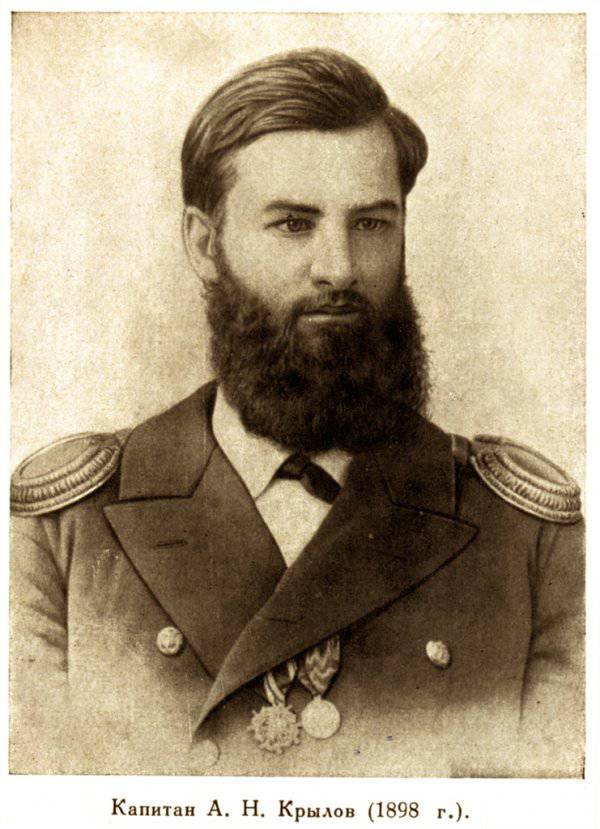
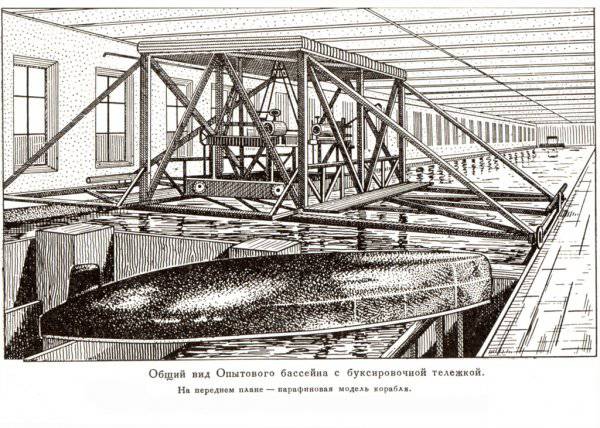
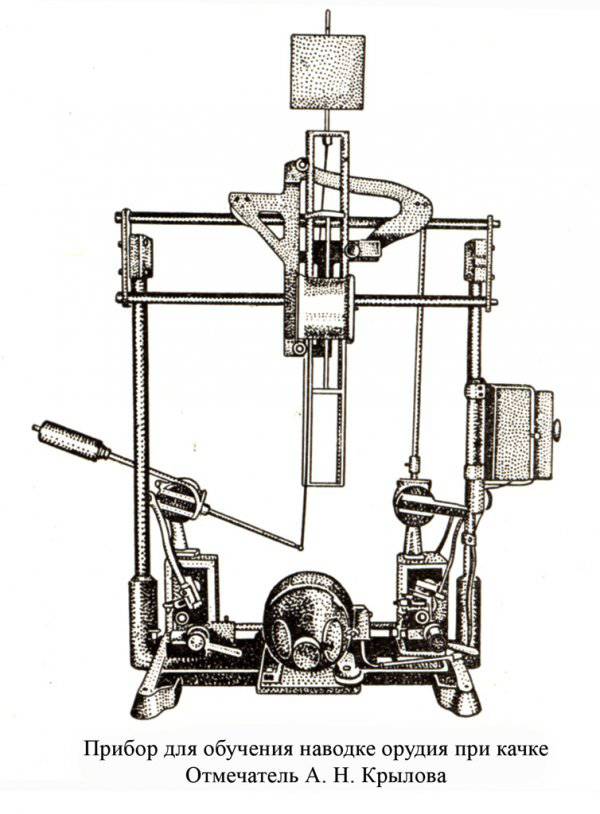
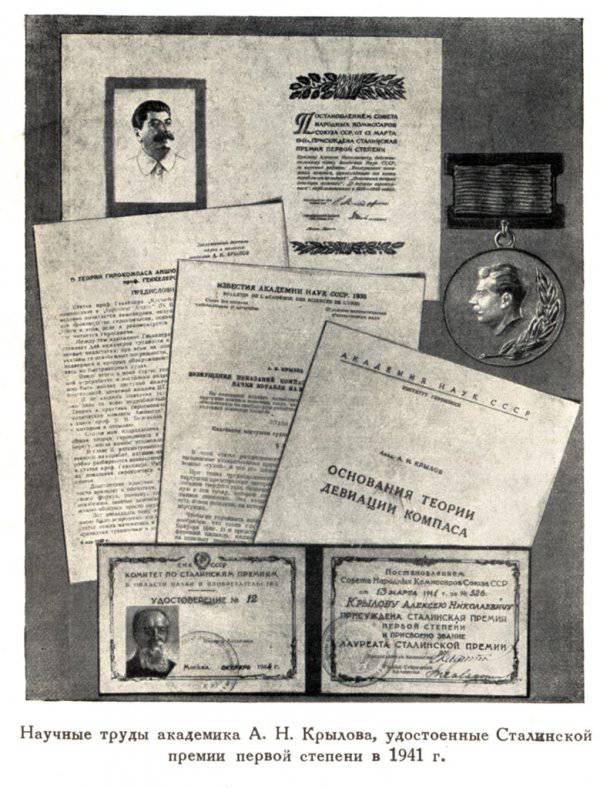
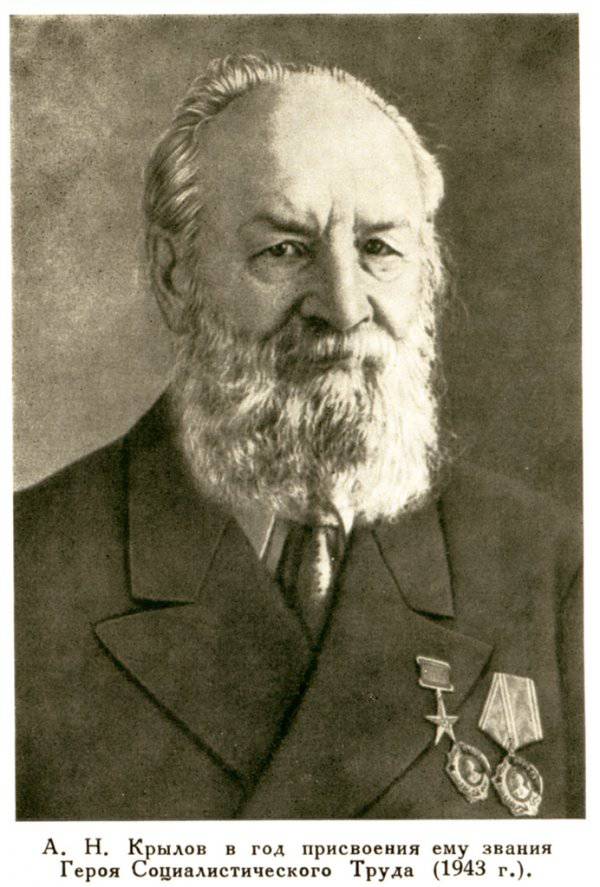
Information